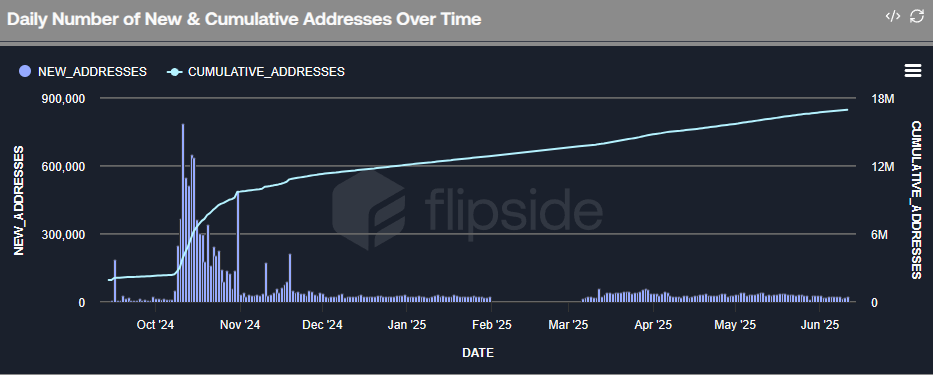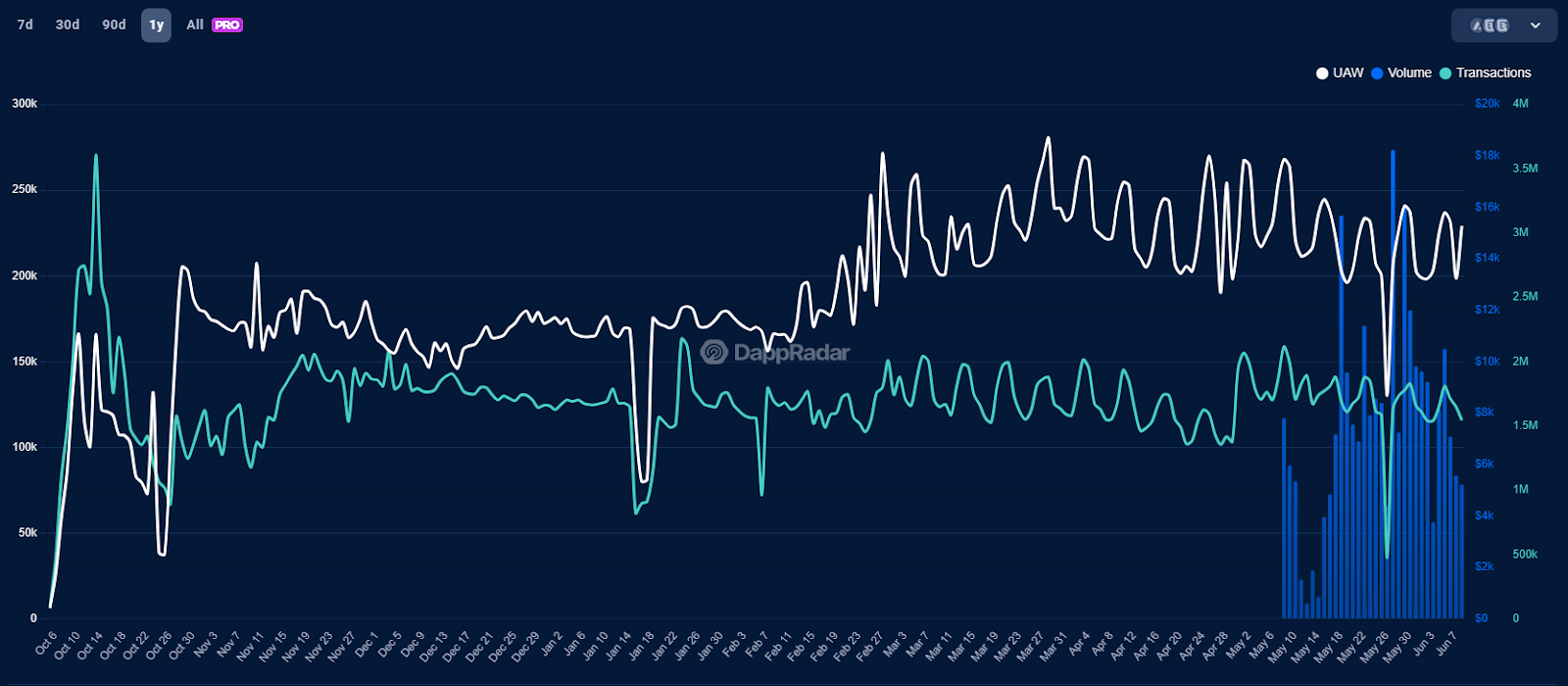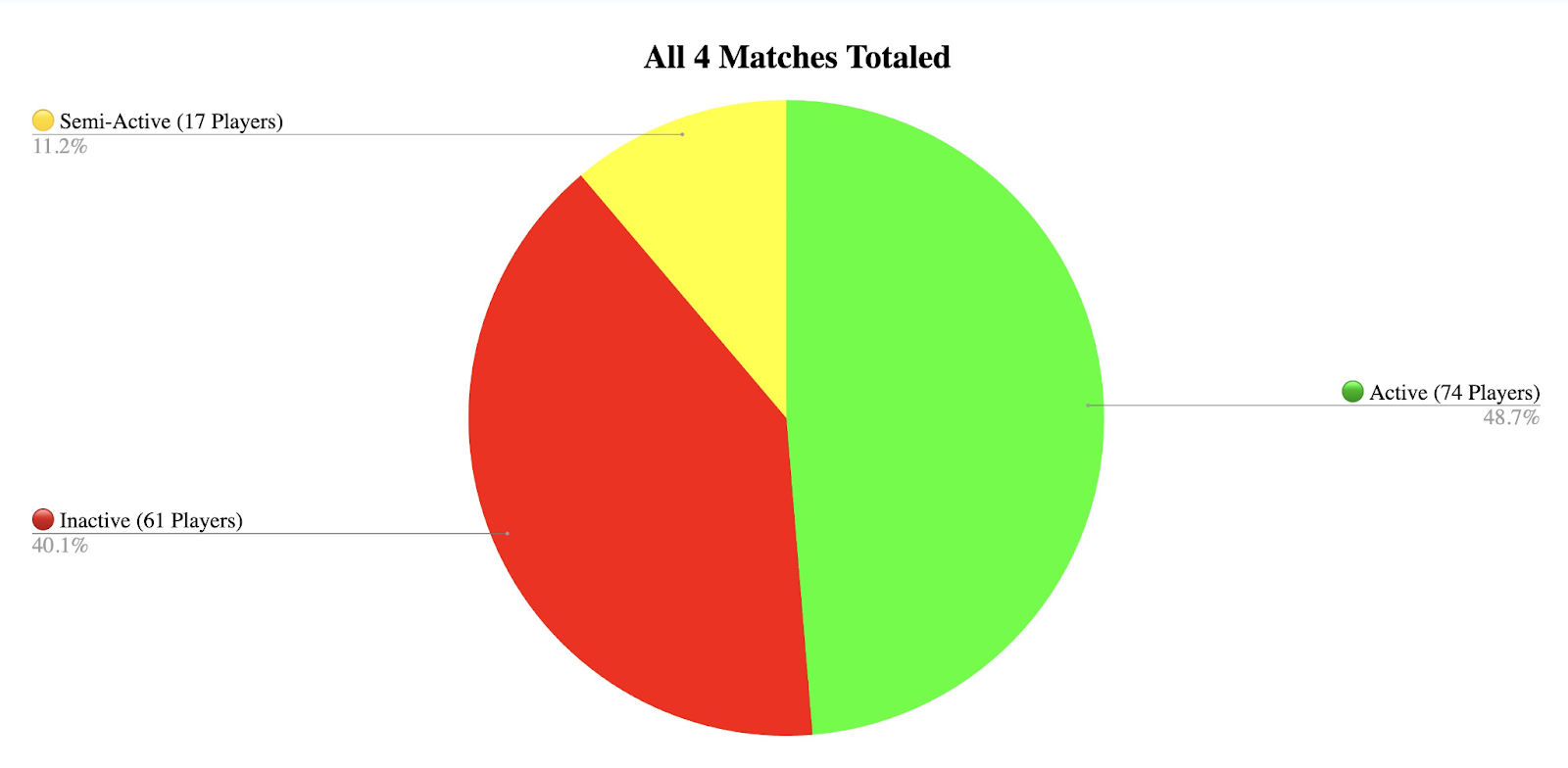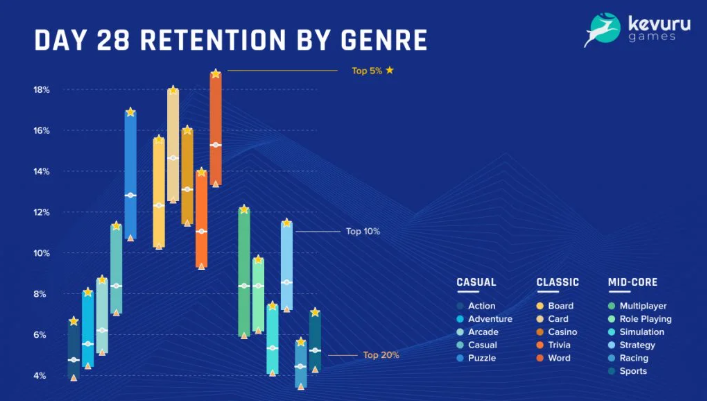This is a segment from The Drop newsletter. To read full editions, subscribe.
Eight months after its early access public launch, Off The Grid is preparing to release on Steam.
The game is currently available as a free-to-play title via the Epic Games Store on PC and on latest-gen Xbox and PlayStation consoles’ respective game shops.
We don’t have the exact Steam launch date yet, but Delphi Ventures Founding Partner Piers Kicks, whose firm invested in Gunzilla Games, said yesterday that the shooter is coming to Steam in a “few weeks” (so likely in the last week of June).
The game remains on Epic’s list of “Most Played” games, suggesting it’s doing well, and holds a player rating on Epic of 3.9 out of a possible 5.
Gunzilla CEO Vlad Korolev said last month that Off The Grid has consistently had over 10,000 new players daily since launch.
Off The Grid falls behind its non-crypto shooter peers when it comes to attention on Twitch, however. In the past month, OTG saw less than a million total hours watched, with an average of 28 Twitch streamers broadcasting the game at any given time. The game sees a total average of about 1,400 concurrent viewers on Twitch.
Those numbers don’t compare to games like Counter-Strike 2 (over 75 million hours watched, with 105,000 average total viewers in that same period) or Apex Legends (17.3 million hours, with 24,000 average total viewers), though.
That makes OTG the 157th most-watched game on Twitch by total watch hours in the past month.
Wallets don’t equal players
First things first: We don’t have exact Off The Grid player count numbers yet, and it’s not accurate to interpret a wallet count as a player count. This is in part because OTG’s crypto elements are optional, but also because we live in a world where bots and AI agents can control wallets (and users can have more than one wallet).
Still, the number of crypto wallets engaging with Off The Grid has grown (roughly doubled) since the game opened up to the public in October.

DappRadar data suggests Off The Grid saw between roughly 40,000 and 170,000 daily UAWs engaging with its crypto elements in its first month of launch. Today, eight months later, it’s seeing around 200,000 daily UAWs.

The vast majority of OTG-related blockchain activity remains on Off The Grid’s testnet, not its mainnet, indicating the ecosystem hasn’t fully switched over just yet.
One player’s story
Aside from the crypto gaming die-hards, how well is Off The Grid retaining new players? A snapshot lauded by Gunzilla’s Web3 director Theodore Agranat paints one person’s perspective. A pseudonymous Off The Grid fan did a test with a new account to get a slice of how many new players are still playing the shooter game — and shared findings in a thread with roughly 12,000 views so far.
He tracked other new OTG accounts to see how many were still playing the game three weeks later.
He found that across 152 accounts and four matches, 40% of those player accounts were “inactive” just three weeks later. A little over 48% were still active after that period, while the rest were “semi-active.”
The conclusion: OTG has “significant” player retention.

To me, this isn’t enough data to draw firm conclusions about the whole game. We also don’t know how many of these are alt accounts, for instance, which could impact those numbers.
Retention expectations
Player dropoff is, of course, normal for all video games — even the most successful ones. And what one game considers a “successful” retention rate could be considered abysmal to another.
There isn’t a lot of public data on what’s widely considered a good retention rate for PC games. Spanish software firm Barbary suggests a 20% retention rate is good for games a week after launch, while anywhere from a 5-10% retention rate is “strong” for PC games after the game has been out for a month.
Data software firm Solsten, however, has found that retention rates higher than this are becoming “the new standard,” because it’s costing developers more money to acquire users now than it did a few years ago. Overall, this makes the gaming industry more competitive.

 blockworks.co
blockworks.co